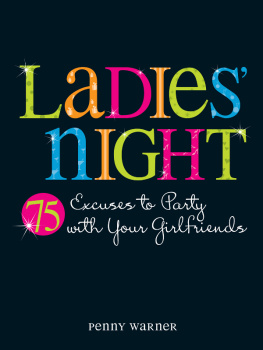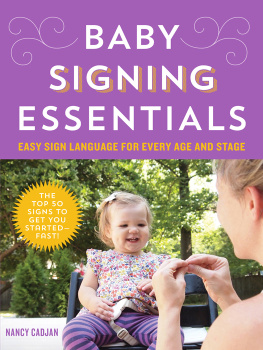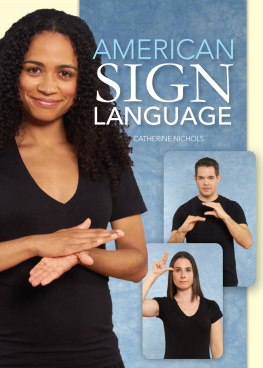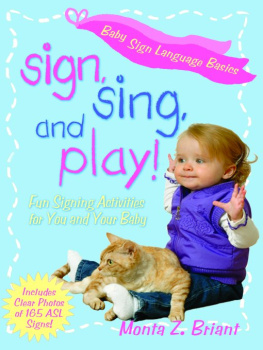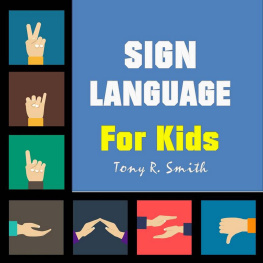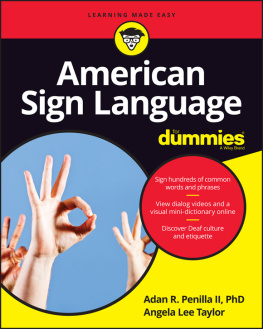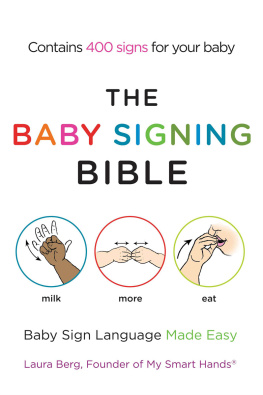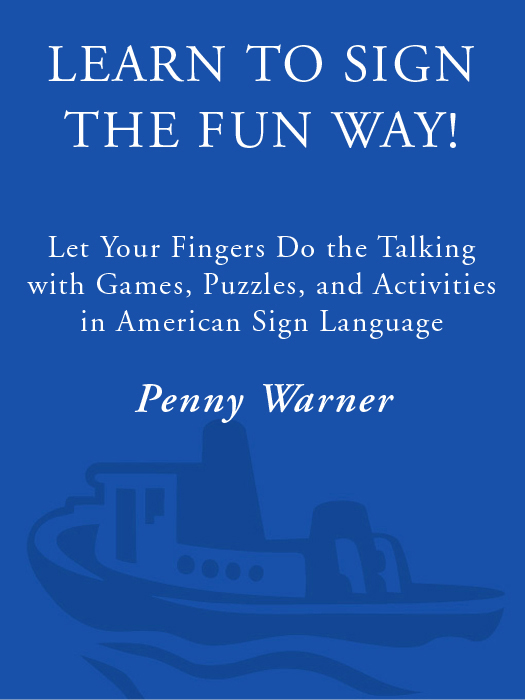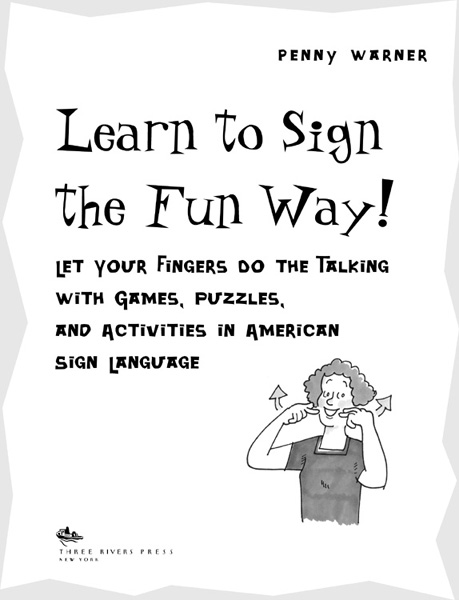Thanks to the following teachers who inspired my love for sign language: Linda Barde, Neil Christiansen, Peggy Garvin, and Beverly Wilson.
Thanks also to Diana Todd for a fun idea. And a special thanks to my wonderful editor, Jamie Miller.
Introduction
W elcome to Learn to Sign the Fun Way. Youre about to learn an exciting new language that will teach you how to talk with your hands. Soon youll be able to say the alphabet with your fingers; use your hands to shape words; and express whole sentences, thoughts, and feelings through American Sign Language (ASL).
ASL, used primarily by deaf people, is the fourth most common language in the United States. Its accepted by most colleges as a foreign language and is offered at many high schools today. You can learn this visually beautiful language by studying the signs, practicing the sentences, and playing the games in Learn to Sign the Fun Way.
Sign language is easy to learn. Just look at the illustrations provided in the book and read the descriptions to make sure youre doing the signs correctly. Soon youll be signing hundreds of words and having conversations. Sign language comes in handy in many ways, especially when you dont want to talk out loud. Its even better if you learn to sign with your friends. That way you will have someone to sign to and can practice your skills together. And if you should meet a deaf person, youll be able to communicate. In fact, if you get really good at sign language, you might even want to make a career of it, by becoming an interpreter for the deaf.
Most of all, learning sign language is fun. I learned the manual alphabet in sixth grade and never forgot it. Eventually I took sign language classes, became fluent, and got my masters degree in special education for the deaf. Ive taught sign language to students for more than twenty years, just because its fun to teach and fun for students to learn. Sign language is like using a code to talk with others who also know the code, so you can chat in private any time you like. The hand shapes often look like familiar gestures, so theyre easy to remember. And with practice, youll soon be singing songs, telling jokes, and playing games in sign language.
Learn to Sign the Fun Way! consists of eighteen chapters filled with illustrated signs to learn, and a last chapter packed with sign language games. youll find the numbers 0 through 10, then 20 through 100 counting by tens, and a few extra numbers you may also need. This chapter also includes practice exercises to help you learn your numbers.
Youll begin to learn signs in all your favorites from pizza and hamburgers to candy and gum.
In offers activity signs, such as dance and play.
includes body signs, so you can talk about your head, hands, or heart.
In offers lots of silly and fun signs, everything from cute and funny to stinky and ugly.
Each chapter offers practice exercises to help you increase your skills and speed. Lots of added tips and information are included throughout the book, to help you learn more about American Sign Language, deaf people, and deaf culture.
When youve finished learning the signs, its time to play some games using sign language. describes more than 80 great games to play with your friends or by yourself. Get ready to try your hand at Daffy Deaf-initions, Funny Fingerspelling, and Guess the Gesture, among others.
If you want to continue learning signs when youre finished with the book, check out the Resources at the back. Theres also a glossary to help you understand some of the terms used in the chapters and an index to help you find the word youre looking for.
All you need to get started besides the book are your fingers and hands. So turn the pageits time to Learn to Sign the Fun Way!
CHAPTER 1
American Sign Language
E ight-year-old Connor Westphal cant hear her mother laugh, her dog bark, or her friends say Hello, but she understands a joke when her mother explains it in sign language. She senses her dogs excitement by his snapping head and wagging tail. And she recognizes her friends greetings by their big smiles and waves.
Connor is deaf. She was born hearing but contracted meningitis when she was only a year old. Although she heard sounds and speech before she became deaf, she cant remember hearing anything. She had even begun to say a few wordsDada, Doggy, and Juice. But she stopped talking after her illness.
How Many Deaf People Are There?
Twenty million people in the United States have a hearing loss. Two million are considered deaf, and many of them use sign language. If a person is deaf, he or she cannot hear or understand speech or most sounds in the environment, even with a hearing aid. Deafness can be caused by heredity, illness, abnormalities, head injury, some medications, and aging. Some forms of deafness can be corrected by surgery, hearing aids, or cochlear implants.
Did You Know?
Some hearing people confuse Braille and sign language. Braille is not a language; its a tactile system of raised dots on paper that represent letters and enable blind people to read. Sign language is a visual language used by many deaf people to communicate.
When Connors parents realized she was deaf, they enrolled her in an infant program for children with hearing impairments. She began to learn American Sign Language, known as ASL. And she began to talk again, using her hands to shape words and phrases. Dada became an open hand tapped at the forehead. Doggy was a snapped finger and a pat on the leg. And juice was an open fist squeezed shut at her mouth.
Sign language changed Connors life. It took her from the world of silence to the world of communication, just like it has for thousands of deaf people in the United States.
American Sign Language is a visual language, different from American Indian Sign Language, scuba diver sign language, army sign language, even British Sign Language. It is one of the most expressive languages, using not only the hands but gestures, body language, facial expressions, and manual signs as well. ASL is the fourth most common language in the United States and is now accepted in many states as a college language requirement. Many high schools today offer sign language for credit.
What Is an Interpreter?
A sign language interpreter translates speech into sign language for a deaf person and sign language into speech for a hearing person. Hearing people who know sign language have many job opportunities, such as teaching, counseling, and interpreting. The most common places to interpret are in court, at hospitals, in classrooms, and at public gatherings.
Most of all, sign language is fun to learn and fun to use. You can talk to your friends without anyone overhearing you. You can chat across a football field when its too noisy to shout. You can sign underwater, in the library, at the movies, or any time you want to keep the conversation private or quiet.


